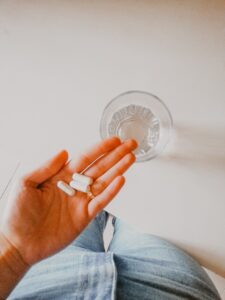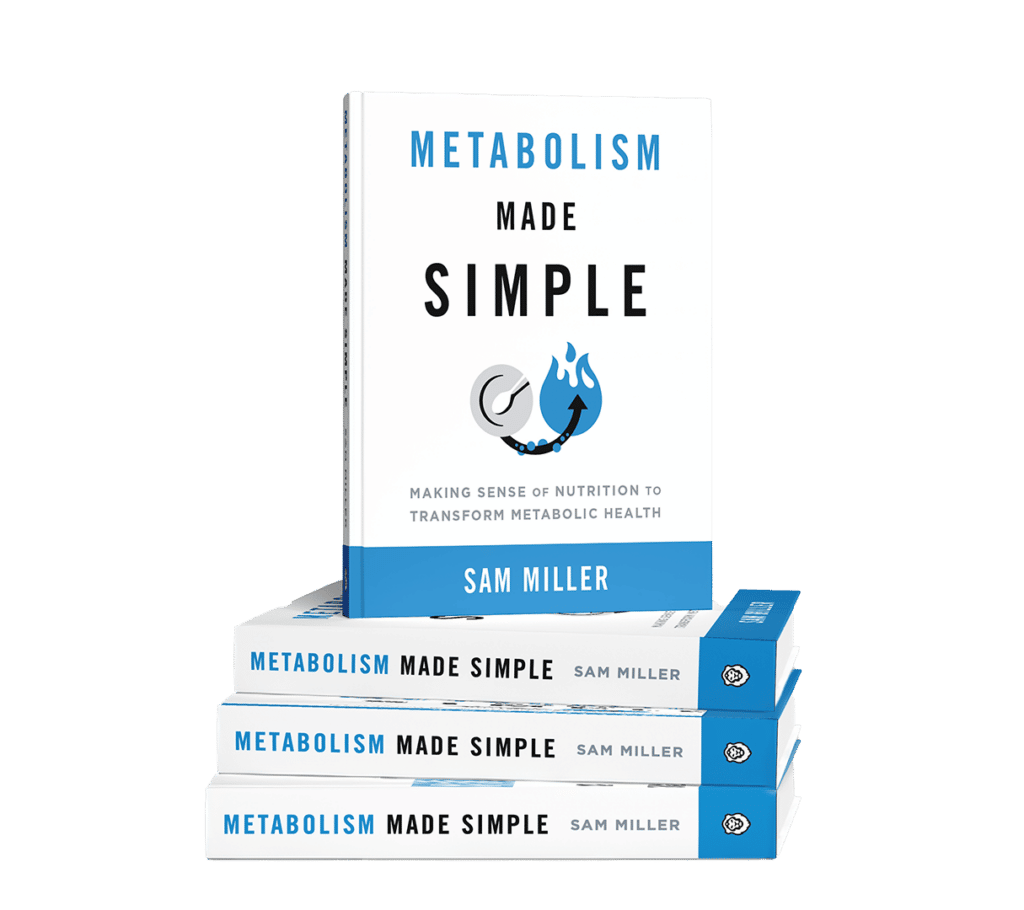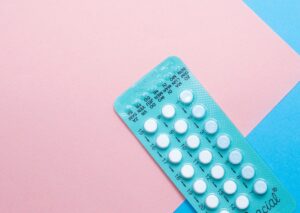Introduction to Birth Control
Birth control was one of the major revolutions of the 20th century that allowed significantly more freedom for women in many different ways. These days, most women hop on it without a second thought, which is understandable given that education around the pros and cons of birth control is absent from the mainstream conversation.
It’s dispensed like candy for issues besides its main purpose (preventing pregnancy), such as masking symptoms of poor cycle health (PCOS, endometriosis, or others) or for acne.
While there’s many different pros and cons to birth control from a biological perspective, today we’re going to be ignoring most of the stuff below the neck, and focusing on how birth control can change the brain. More specifically, how birth control can potentially shift your choice in mate and who you actually find attractive.
When you’re taking oral birth control, you’re ingesting exogenous (from outside the body) hormones. Some analogue of progesterone (not bioidentical) and sometimes an analogue of estradiol.
Sex hormones aren’t just for sexual function.
They’re very psychoactive, meaning they influence brain function and brain architecture to a large degree. In recent years, more research has come about addressing the differences in mate-seeking behavior or mate choice when on hormonal contraceptives vs. not, and the results are pretty interesting.
First, we do have to lay out some groundwork and foundational knowledge around cycle health.

Basic Menstrual Cycle Physiology
In order to understand how oral contraceptives can actually influence things like mate choice and partner attractiveness, we need to review a bit of baseline cycle physiology.
The first day of your cycle is actually your period or when you start menstruation. During the previous phase, the endometrial lining builds up to prepare for implantation of a fertilized egg. If there is no fertilized egg, then the body goes ahead and sheds that lining; thus the period or menstruation.
After this, the second half of the follicular phase occurs. Estrogen slowly rises during this phase, up until right around mid cycle, where estrogen peaks and you subsequently have a surge in gonadotropins and the egg is released – This is where the woman is going to be the most fertile. Just as a little side note, women tend to be a little more insulin sensitive during this phase.
After the surge, estrogen drops slightly, then maintains, while progesterone rises. The follicle that had the egg turns into the corpus luteum, which secretes progesterone in order to prepare the body for fertilization.

Now that you know this information, when would you expect that a woman would have the highest libido? Probably right prior and around ovulation, right? This would make sense since this is when a woman is most fertile, and we do indeed see this. Women do tend to have the greatest libido right around that time period.
This is a very clear example of how sex hormones can affect the brain and how we think. If it’s affecting your brain in this way, how else might it be affecting your brain?
Birth Control’s Effect on Mate Choice and Attractiveness
Bringing it back to birth control; it puts you in this permanent pseudo-luteal phase physiology, where it’s tricking your body into thinking that you’re pregnant.
Just logically speaking, if your body thinks your pregnant, this is probably going to lower your libido since you’re already carrying the next generation and there’s no need to reproduce; but what else is going on underneath the hood?
Study #1 – Changes to Attraction After Initiating Birth Control
Let’s first take a look at a 2013 study that actually performed two experiments: One experiment had women that either hadn’t ever taken birth control or hadn’t for quite some time. They showed them pictures of faces of men who were the same age as them and asked them to rate attractiveness. Then, the same women initiated birth control usage and repeated the experiment with different male faces.
Prior to birth control usage, the women tended to prefer more masculine faces, particularly in the 3-5 days around ovulation. Meaning male faces that were more symmetrical, square-jawed, etc. After initiating birth control, the opposite was true: They preferred less masculine faces.
That particular portion of the study addresses actual attractiveness, but then they went further to look at mate choice.
In the second part of the study, the partners of a large sample of women were examined, and the women were asked whether or not they were on birth control at the time that they got together with that partner.
The results shouldn’t surprise you at this point; the women who chose their partner when they weren’t on birth control tended to have more masculine partners, whereas the women who chose their partner when they were on birth control tended to have less masculine partners. This provides some data that birth control not only influences attractiveness perception, but also mate choice.
Attraction Changes Throughout the Normal Menstrual Cycle
This does make sense if we consider the rest of the body of literature. Attractiveness perception has been studied quite well in the context of a normal menstrual cycle. Prior to ovulation in the first half of the cycle, women tend to prefer more masculine men: Lower voices, square jawed, more muscle mass, socially dominant, etc, and also men that are genetically different to them.
This effect is by far the strongest right around ovulation where the woman is most fertile. During the luteal phase, they tend to prefer less masculine men. This translates to more of the “caretaker” look or phenotype: the “dad bod”, a slightly more round face, less socially dominant, etc.
If you consider the evolutionary point of view, this makes total sense. Birth control puts you in a state where you’re not fertile and your body thinks you’re already pregnant in some ways. In normal cycle physiology, it would make sense for the woman to prefer a more “caretaker” phenotype over a more masculine one.
If the woman did indeed get pregnant, they would want a man to stick around and help care for the baby; and in the evolutionary context, this did not necessarily have to be the one that she mated with. However, prior to and during ovulation, the woman has the evolutionary drive to mate more so than in luteal phase, and a more masculine man generally signals good physical genetics at least, and probably a good immune system.
If, in an evolutionary context, a man could maintain muscle mass and have that masculine look when resources such as food weren’t guaranteed, that would mean he not only survived in such a context, but thrived. Then when we also consider the preference of women during that time period for someone genetically opposite, it all makes sense and points to an evolutionary advantage for the baby.
However, those same masculine traits might make that man less likely to stick around (debatable) and actually care for the baby long-term, and this is where the opposite mate preference comes in.
Beyond Attractiveness – Relationship Satisfaction Studies
Moving on a little bit further, we can also look at relationship satisfaction and other metrics in women who started a relationship on either hormonal contraceptives or not, and there are actually a few studies on this with conflicting results.
In some of the earlier studies, women who used birth control scored lower on measures of sexual satisfaction and partner attraction, experienced increasing sexual dissatisfaction during the relationship, and were more likely to be the one to initiate an eventual separation if it occurred. However, paradoxically, separation was less likely to occur in general when women were using birth control.
However, a more recent, higher powered study came out that calls these results into question. The largest of the previous studies I was just talking about used 365 participants, whereas this one used 948 participants. Some of the other studies also used non-validated methods to test some of the metrics.
In this larger study, they tried to do exact replications of 3 of the studies I was talking about just a few seconds ago, except with a lot higher statistical power. In this case, they’d be much closer to being able to truly hash out whether an effect of birth control is there more accurately than the previous studies.
This time they studied four groups:
- Those who were on birth control the entire relationship
- Those who weren’t ever on birth control
- Those who started the relationship on birth control but stopped
- Those who weren’t on birth control at the beginning of a relationship but started at some point later.
They found the largest differences between the two continuous groups, meaning the ones who were either on birth control the whole time or not.
Sexual satisfaction and relationship satisfaction was slightly higher in those who were using birth control the whole time, so a bit of conflicting results here compared to the last study we looked at.
However, one particular caveat is that in this present study, the average relationship time was about 30 months compared to 104 months of the previous studies, so it could be that this effect takes longer to manifest.
Birth Control Means Less of an Ability to Bond with your Partner?
We now know that both mate choice and partner attractiveness is most likely affected and that relationship satisfaction may or may not be affected, so let’s go to a study that sought to tease out a little more of the molecular mechanisms in perception of attraction, as well as pair-bonding and sense or feeling of reward from a partner.
The hormone oxytocin facilitates pair-bonding of individuals. It’s released after sex, during intimate hugs, cuddling, etc. Upon release of oxytocin, the brain’s reward system normally lights up which is part of the mechanism by which it facilitates pair bonding.
In this particular study, they had two groups of women: Those on birth control and those not on birth control. Both of these groups were treated with an oxytocin nasal spray, then shown pictures of various different people, including their partners, their friends or family, and also random people, all while they were getting brain imaging to see the response of the reward center of the brain.
To clarify, we’re in a state of elevated oxytocin in everyone (because of the nasal spray), but we’re mainly observing the degree of the reward response toward their partner on birth control vs not on birth control.
In non-users, treatment with oxytocin increased the perceived attractiveness of the partner relative to other men, which was paralleled by elevated responses in reward-associated regions of the brain.
These effects of oxytocin were completely absent in women using birth control, meaning they rated their partner not as attractive or the same level of attractiveness relative to other men, and their brains reward response after oxytocin treatment was not elevated.
Therefore, the researchers conclude that birth control could potentially attenuate pair bonding.
Birth Control and Jealousy
Let’s take a look at other aspects of relationships in the context of birth control; namely jealousy. Could birth control potentially affect levels of jealousy in a relationship?
The answer is yes, and there are many studies looking at this. This effect actually seems more robust and reliable than many of the previous ones we’ve discussed. It’s actually been established for 15 or 20 years that oral contraceptives can increase feelings of jealousy a partner may feel.
A more recent study actually checked to see if this scaled with the dose of birth control used. This study used a combination progestin/ethinyl estradiol formula with various different dosages, and indeed, it found that as the dose of estradiol scaled up, the feelings of jealousy scaled up as well. It did not correlate with increasing doses of progestin, however.
Further bolstering this claim, the study we were talking about earlier – the one with 948 participants that looked at relationship satisfaction/sexual satisfaction/etc – The one metric they measured that showed a VERY clear difference in users vs. non-users was indeed feelings of jealousy. That is, any of the women who were on birth control reported higher feelings of jealousy.
Let’s take a look at this from an evolutionary point of view again to see the potential ‘why’. If a woman was not pregnant (follicular phase) and a partner decided to run off on them, the consequence was not near as great.
It only affected the woman and no one else, and she could potentially find a new partner. However, if a woman was pregnant (and remember birth control tricks the body into thinking it is), then the consequence of a mate leaving would be that much greater. That would mean potentially significantly less resources for the baby.
Men’s Attractiveness towards Women – Does it Go the Other Direction?
This might actually go the other way as well, asking the question “Would men also find women who were ovulating more attractive than women who werent?” The study that tested this is kind of funny, but rather clever.
Basically, the researchers looked at the tip-earning potential of professional lap dancers at a gentlemans club during 3 different points in their menstrual cycle (menstruation, ovulation, mid-luteal phase) and they also looked at the same thing for women on birth control. They took an average of 300 work shifts.
Normally cycling participants earned about $335 per 5-h shift during or slightly before ovulation, $260 per shift during the luteal phase, and $185 per shift during menstruation. By contrast, participants using birth control showed no clear trend in earnings peak.
Here we have evidence that men may find women slightly more attractive during ovulation, and while your mind might go to something “pheromonal”, it’s more likely a mix of both hormonal and behavioral.
Both research and a lot of anecdotes show that women tend to feel sexier, more attractive, and more confident leading up to ovulation, and this effect peaks at ovulation. In other words, the women giving lap dances at this point may have been a little extra flirty, a little extra sensual in their dancing, etc, leading the men to tip them more.
However, there is also scientific evidence that men tend to prefer the scent of ovulating women more so than not, meaning there’s also probably some sort of pheromonal effect here, and that this effect might also be abolished in birth control use.
Conclusion
While this research is incredibly interesting stuff, I also don’t want to nocebo you into questioning your current partner and relationship. Do realize that this research has some limitations and there is some conflicting research out there, but there’s certainly enough to say for fact that birth control does make a difference here.
It all makes sense from an evolutionary standpoint. I personally think it’s more empowering than anything; if you did happen to feel any of these things or are in the midst of feeling them, then this gives you a potential reason, and you can always weigh the costs and benefits and perhaps discontinue birth control.
References
Alvergne A, Lummaa V. Does the contraceptive pill alter mate choice in humans? Trends Ecol Evol. 2010 Mar;25(3):171-9. doi: 10.1016/j.tree.2009.08.003. Epub 2009 Oct 7. PMID: 19818527.
Little AC, Burriss RP, Petrie M, Jones BC, Roberts SC. Oral contraceptive use in women changes preferences for male facial masculinity and is associated with partner facial masculinity. Psychoneuroendocrinology. 2013 Sep;38(9):1777-85. doi: 10.1016/j.psyneuen.2013.02.014. Epub 2013 Mar 23. PMID: 23528282.
Roberts S. Craig, Klapilová Kateřina, Little Anthony C., Burriss Robert P., Jones Benedict C., DeBruine Lisa M., Petrie Marion and Havlíček Jan 2012. Relationship satisfaction and outcome in women who meet their partner while using oral contraception. Proc. R. Soc. B.2791430–1436
http://doi.org/10.1098/rspb.2011.1647
Jean-Jasmine M.L. Lee et al. Oral Contraception and Female Sexual Dysfunction in Reproductive Women. Sexual Medicine Reviews. REVIEW| VOLUME 5, ISSUE 1, P31-44, JANUARY 01, 2017. DOI:https://doi.org/10.1016/j.sxmr.2016.06.001.
Kelly Cobey et al. Hormonal birth control use and relationship jealousy: Evidence for estrogen dosage effects. Personality and Individual Differences. Volume 50, Issue 2, January 2011, Pages 315-317. https://doi.org/10.1016/j.paid.2010.09.012
Dirk Scheele, Jessica Plota, Birgit Stoffel-Wagner, Wolfgang Maier, René Hurlemann, Hormonal contraceptives suppress oxytocin-induced brain reward responses to the partner’s face, Social Cognitive and Affective Neuroscience, Volume 11, Issue 5, May 2016, Pages 767–774, https://doi.org/10.1093/scan/nsv157
Geoffrey Miller et al. Ovulatory cycle effects on tip earnings by lap dancers: economic evidence for human estrus? Evolution and Human Behavior 28 (2007) 375–381. doi:10.1016/j.evolhumbehav.2007.06.002
Roney, J. R., & Simmons, Z. L. (2008). Women’s estradiol predicts preference for facial cues of men’s testosterone. Hormones and Behavior, 53(1), 14–19. https://doi.org/10.1016/j.yhbeh.2007.09.008
Feinberg, D. R., DeBruine, L. M., Jones, B. C., & Little, A. C. (2008). Correlated preferences for men’s facial and vocal masculinity. Evolution and Human Behavior, 29(4), 233–241. https://doi.org/10.1016/j.evolhumbehav.2007.12.008
Gangestad, S. W., Simpson, J. A., Cousins, A. J., Garver-Apgar, C. E., & Niels Christensen, P. (2004). Women’s Preferences for Male Behavioral Displays Change Across the Menstrual Cycle. Psychological Science, 15(3), 203-207. https://doi.org/10.1111/j.0956-7976.2004.01503010.x
Seppo Kuukasjärvi, C. J. Peter Eriksson, Esa Koskela, Tapio Mappes, Kari Nissinen, Markus J. Rantala, Attractiveness of women’s body odors over the menstrual cycle: the role of oral contraceptives and receiver sex, Behavioral Ecology, Volume 15, Issue 4, July 2004, Pages 579–584, https://doi.org/10.1093/beheco/arh050
Patrick Jern et al. Evolution and Human Behavior. A high-powered replication study finds no effect of starting or stopping hormonal contraceptive use on relationship quality. Volume 39, Issue 4, July 2018, Pages 373-379. https://doi.org/10.1016/j.evolhumbehav.2018.02.008.

















